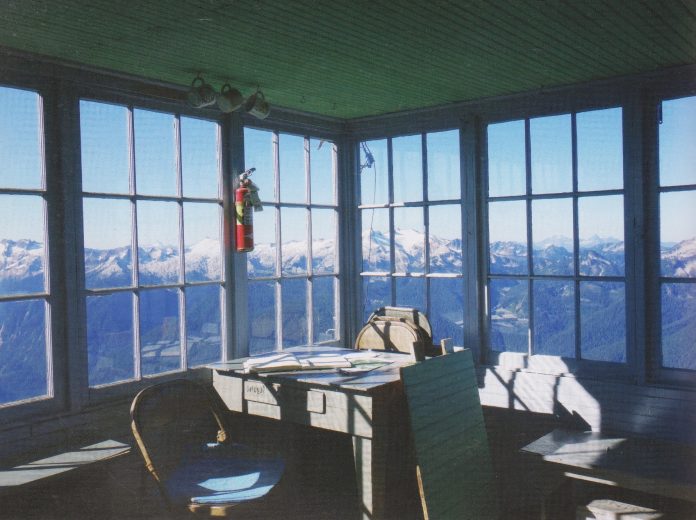
In the first half of the 20th century, thousands of fire lookouts – small wooden cabins built atop scenic mountain vistas – covered the United States. In Washington, where between 500 and 600 lookout structures once existed, there are now about 90 lookouts still standing, according to the book “Hiking Washington’s Fire Lookouts.” Skagit County features four particularly excellent ones. Each provides interesting histories and – for those hearty enough to reach them – stunning views of our region.
What Is a Fire Lookout?
Fire lookouts were generally staffed each summer by forest service employees who monitored for fire activity and didn’t mind constant solitude in out-of-the-way places. During World War II, some lookouts were used for spotting enemy planes that never came, and some were even staffed year-round.
But over the decades, budget changes and better technology caused the number of fire lookouts to greatly diminish. Many fell victim to decay from weather, abandonment and vandalism. However, several hundred staffed or publicly-accessible fire lookouts still remain across the U.S. today.
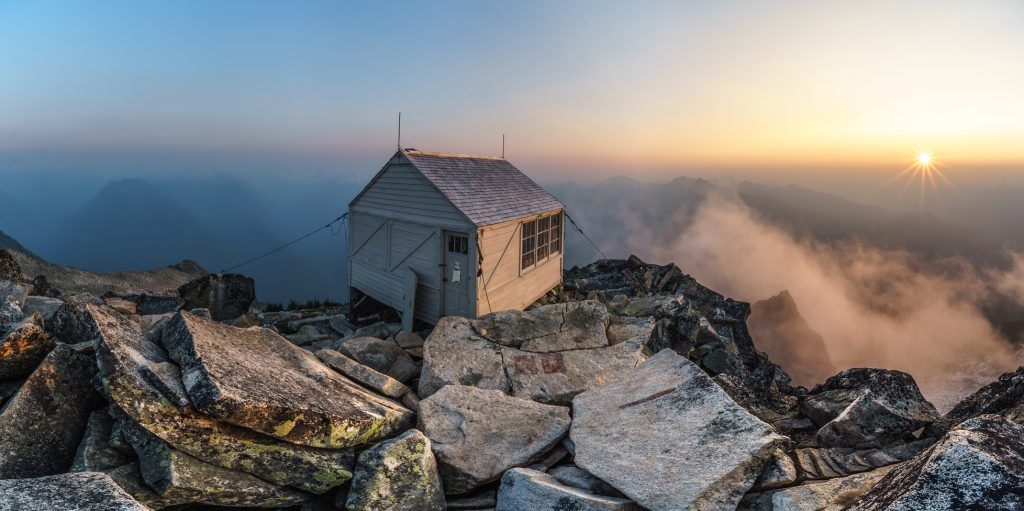
Hidden Lake Lookout
Located just inside the boundary of North Cascades National Park, Hidden Lake Lookout was built in 1931. It’s an L-4 cab-style cabin typical of that era’s lookout construction: square, with 14 feet on each side and plenty of windows.
Hidden Lake was last staffed in 1953. Like many lookouts of its day, it would likely be only a memory without restoration and maintenance from a community volunteer group. The Friends of Hidden Lake Lookout are responsible for the Hidden Lake cabin’s upkeep, and helped it join the National Register of Historic Places in 1987.
The cabin is open to the public 24 hours a day, though staying overnight is a first-come, first-served affair. If features a double bed surface for sleeping bags, counters, and a desk, though its woodstove was removed several years ago.
Located at nearly 6,900 feet above sea level, getting there requires a turn off the North Cascades Highway at Marblemount onto Cascade River Road. That’s followed by a steep and rutted forest service road, and finally a four-mile hike that gains some 3,200 feet of elevation.
But if you take the journey, your reward will be enormous: a 360-degree view of the North Cascades on a day with good visibility, including glimpses of Mount Baker, Mount Shuksan and Glacier Peak.
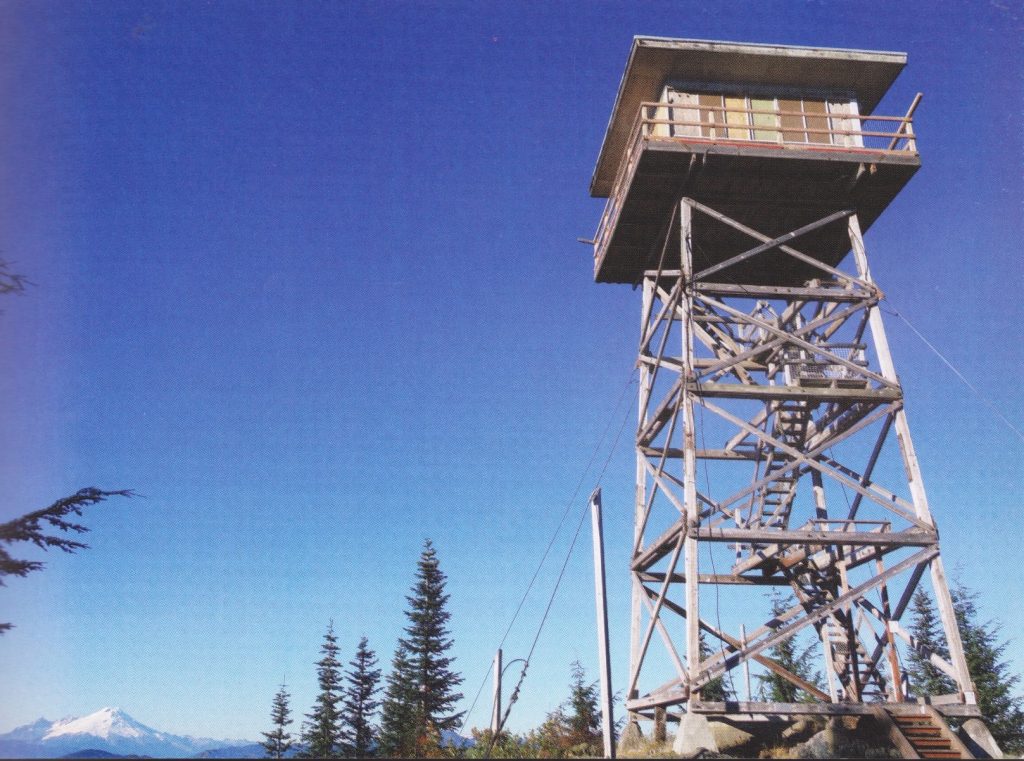
North Mountain Lookout
Located in Mount Baker Snoqualmie National Forest, North Mountain Lookout was built much later than other fire lookouts on this list, in 1966. Its cabin – a 14-foot-by-14-foot R-6-style structure – sits atop a 40-foot tower typical of later-era lookout construction.
It remained in use by the Forest Service until the 1990s, seeing frequent vandalism after its abandonment. But in 2013, the volunteer group Friends of North Mountain formed and restored the cabin, which is now available for seasonal overnight rentals. It is the only rentable lookout in Washington that you can drive to, and is furnished with historic furniture including an insulated lightning stool.
Located about 3,800 feet above sea level, the cabin is equipped with counters, a table, chairs, dishes, and a protected queen mattress (you’ll need your own accessories to sleep comfortably and hygienically on it, though).
There’s also an outhouse about 150 feet from the tower: it’s hard to think of a bathroom with better views, including of the Sauk-Suiattle River Valley and dozens of mountain peaks. Occasionally, U.S. Navy EA-18 Growler jets fly by the area, providing an exhilarating and ear-piercing thrill.
Getting to North Mountain requires a drive along State Route 530 and a trip up a winding gravel mountain road, so be prepared for slow driving that is best handled in a vehicle with non-low clearance.
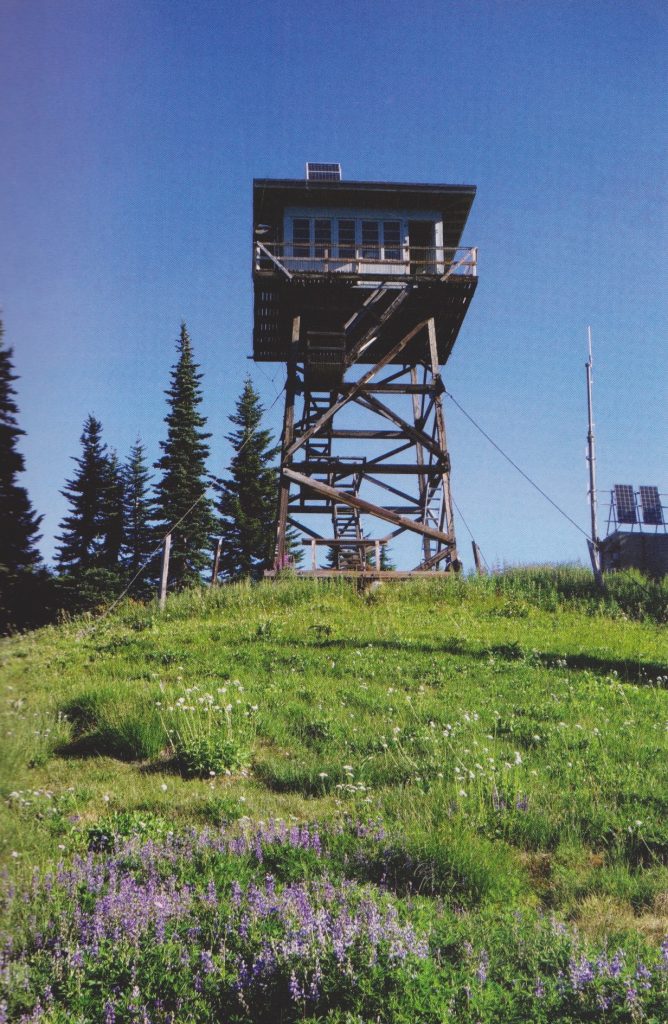
Lookout Mountain Lookout
Another tower-based cabin, Lookout Mountain’s 15-foot-by-15-foot lookout was built in 1962 and stands over 5,700 feet above sea level. It originally replaced a 1929-built cabin that was torn down in 1967.
Getting to the lookout isn’t easy, requiring a 4.7-mile hike that gains over 4,400 feet of elevation including a thousand feet in the first mile alone. From the top, plenty of Cascade Peak powerhouses are visible. Inside the cabin are two bed platforms, books, dishes, and an outside cold box for keeping food items cool. Like Hidden Lake, staying overnight is possible but is first-come, first-served.
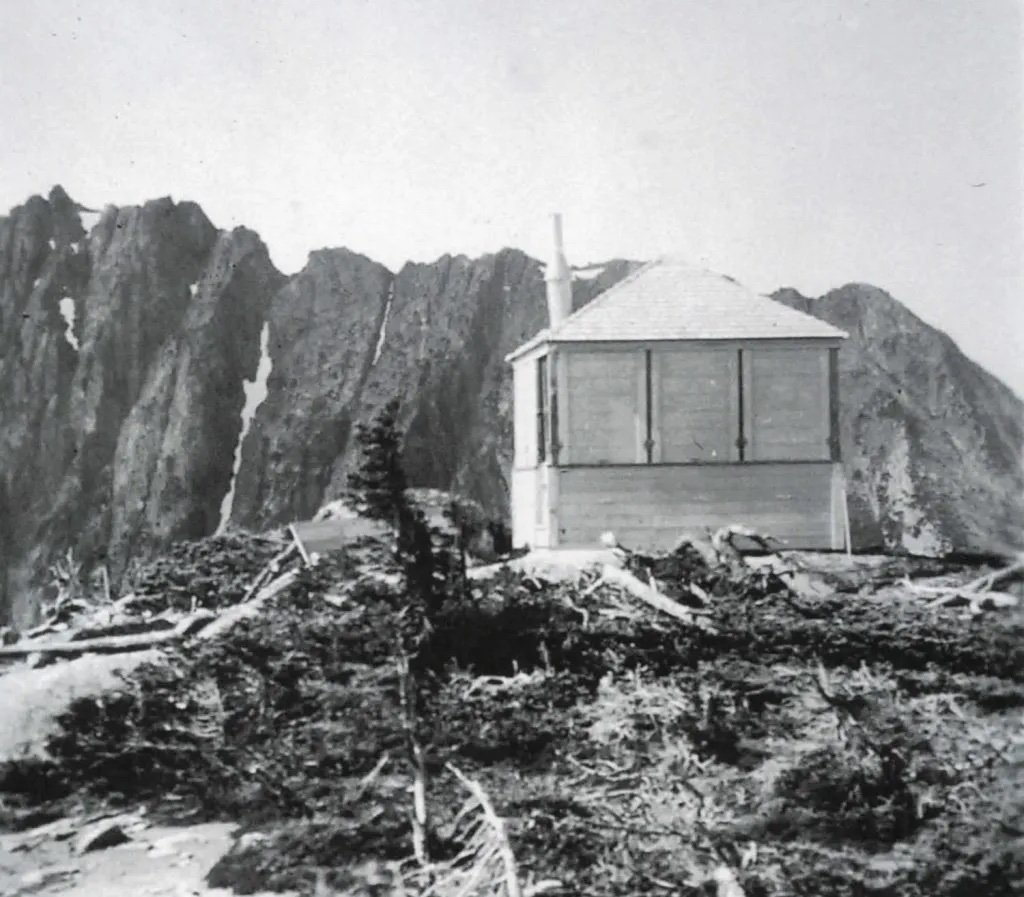
Mebee Pass Lookout
By far the smallest and most fragile cabin on this list, the Mebee Pass Lookout was constructed by the U.S. Forest Service in 1934.
An L-5-style cabin that is believed to be the last of its kind, Mebee Pass lookout is a tiny 10-foot-by-10-foot structure with now boarded-up windows and a door. These lookouts were typically pre-assembled and brought via horse or mule to a chosen site during fire season.
The cabin was in dire shape in 2013, but Friends of Mebee Pass Fire Lookout worked with others to save the historic site. At nearly 4,500 feet above sea level, getting there requires hiking a trail that can be reached from several other prominent trails, including the Pacific Crest, Methow River and East Creek trails.
As with any planned hike, make sure to check trail and weather conditions, tell someone where you’re going, and be aware of any permits you may need.



































